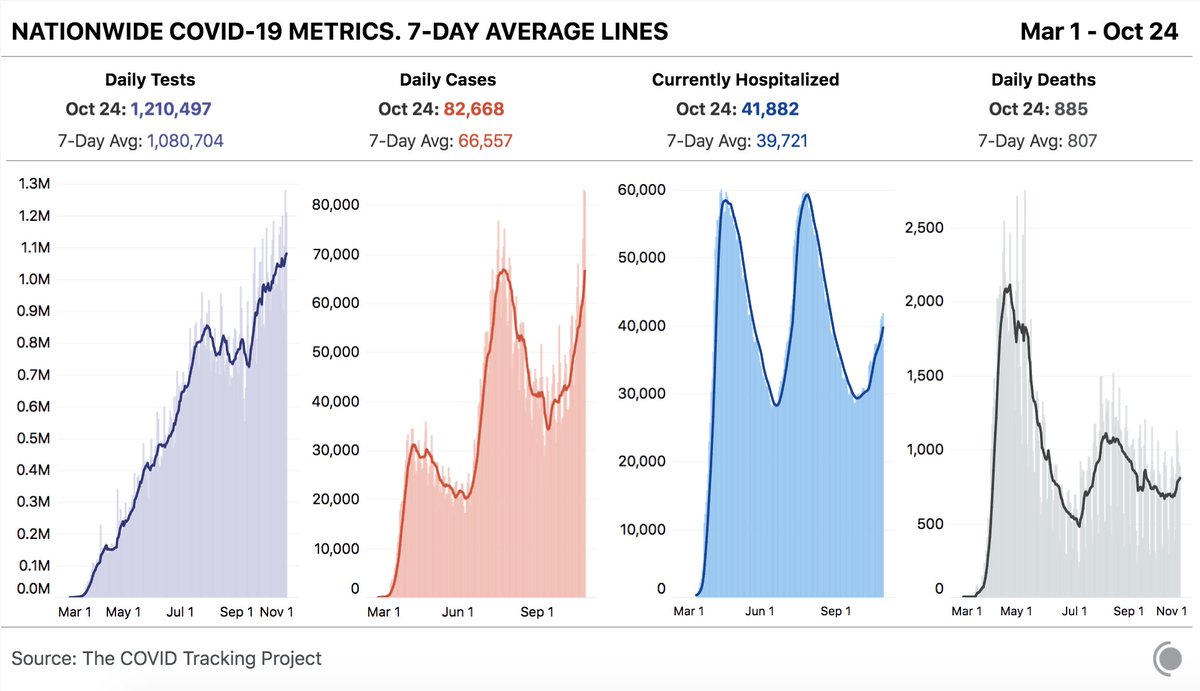
As COVID-19 cases and hospitalizations once again rise across the United States so, inevitably, will deaths. But there is reason to hope that we will not see the devastating fatality rates of the initial spring surge. A brief thread.
Earlier we shared a post highlighting the relationship between cases and hospitalizations. Here we take a closer look at the relationship between hospitalizations and COVID-19 deaths. covidtracking.com/blog/deaths-ar…
In the past week, US states and territories have reported all-time highs in new cases of COVID-19. An alarming trend which we expect to be reflected in hospitalization data. But "another NYC" is far from inevitable.
The gap that opens up between the hospitalization and fatality curves illustrates one of the most encouraging pieces of news about the COVID-19 pandemic in the United States. 

Improvements in hospitalized patient care and overall patient outcomes are a welcome shift in COVID-19 news. It's also important to reiterate that if US outbreaks continue to worsen, overburdened hospitals could lead to a reversal in these trends.
• • •
Missing some Tweet in this thread? You can try to
force a refresh














